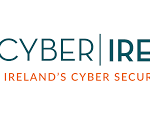In just three months, Microsoft will stop supporting Windows 10. From 14 October 2025, businesses still running on this operating system will no longer receive security updates or technical assistance. For many, this deadline has quietly crept up but ignoring it will have serious consequences.
At Lantech, we’re already helping our clients prepare. If your business operates in Ireland or the UK and you’re still relying on Windows 10 or Windows Server 2016, now is the time to act.
What makes a workplace inspiring?
After 14 October 2025:
- No more security patches or bug fixes. Your systems become exposed to malware, ransomware and evolving cyber threats.
- No technical support from Microsoft leaving you on your own if something goes wrong.
- Potential compliance issues many frameworks (including Cyber Essentials) expect systems to be up to date.
- Business software could start to fail updates and integrations may no longer work on outdated platforms.
- Risk to operations and reputation a data breach or system failure can result in real-world business damage.
We’ve spoken to plenty of businesses who simply didn’t realise the deadline was this close. The reality is harsh: using Windows 10 past October is like leaving the doors wide open to cybercriminals.
What About Windows Server 2016?
It’s not just Windows 10. Windows Server 2016 is also reaching end of life, presenting risks for file servers, legacy applications, and core business systems.
These platforms won’t shut down overnight but they’ll silently become liabilities, increasing your exposure to attacks, instability, and rising support costs.
What About Windows 11? Is That Future-Proof?
Good question. Microsoft has yet to announce a Windows 11 end of life date, and it’s clear they’re investing heavily in its future. With Copilot+ PCs, Windows 365, and on-device AI tools, 2025 is shaping up to be the year of the modern business desktop.
At Lantech, we’re helping our clients move not just to Windows 11 but to a more agile, secure, and productive setup that includes:
- Modern cloud integration
- Built-in AI productivity tools
- Long-term cybersecurity support
- Remote-friendly user experiences
What Are Your Options?
If you’re still running Windows 10, here’s how we recommend approaching the transition:
1. Assess your current setup
We offer a free Windows 11 Readiness Assessment to help you understand which devices can be upgraded and where gaps may exist.
2. Plan your migration
Not every upgrade means new hardware. We’ll help you identify what can be refreshed and what needs replacin including cloud-based solutions where relevant.
3. Consider ESU (Extended Security Updates) if needed
This is Microsoft’s paid-for stopgap for legacy systems, but it’s not a long-term fix. We’ll help you weigh up the cost and risk.
4. Secure your business
Use this opportunity to get Cyber Essentials certified and ensure your security strategy is ready for the modern threat landscape.
Why Work With Lantech?
We specialise in helping small to mid-sized businesses without internal IT teams navigate complex transitions like this. Whether you’re in finance, legal, healthcare or professional services, our job is to take the pain out of IT so you can focus on growth.
When it comes to Windows 10 end of life, we don’t just help you upgrade — we make sure you come out of it in a stronger position than before.
This Isn’t Just a Tech Issue. It’s a Business Risk.
If you’re asking “When is Windows 10 end of life?”, the answer is: sooner than most people think. But there’s still time to act — and with the right support, this can be an opportunity to modernise, secure and streamline how your business works.
Talk to Lantech today.
Let’s get ahead of the deadline — and turn this into a win for your business.



